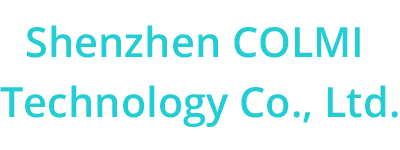Smartwatches are one of the most popular wearable devices in the market today. They offer a range of features and functions, such as fitness tracking, notifications, health monitoring, and more. However, not all smartwatches are created equal. One of the most important factors that differentiate them is the type of screen they use.
The screen is the main interface between the user and the smartwatch. It affects the readability, visibility, battery life, and overall user experience of the device. Therefore, it is essential to understand the different types of screens available for smartwatches and their pros and cons.
## The Importance of Screen in Smartwatches
The screen is the primary component that determines how a smartwatch looks and performs. It influences several aspects of the smartwatch, such as:
- **Display quality**: The screen determines how clear, bright, and colorful the images and text are on the smartwatch. A high-quality screen can enhance the visual appeal and readability of the device.
- **Battery life**: The screen consumes a significant amount of power on a smartwatch. A screen that uses less energy can extend the battery life of the device and reduce the need for frequent charging.
- **Durability**: The screen is also one of the most vulnerable parts of a smartwatch. It can get scratched, cracked, or damaged by water, dust, or impact. A durable screen can protect the device from external factors and increase its lifespan.
- **User experience**: The screen also affects how easy and enjoyable it is to use a smartwatch. A responsive, intuitive, and interactive screen can improve the user experience and satisfaction of the device.
## Different Types of Screens for Smartwatches
There are various types of screens used in smartwatches today. Each type has its own advantages and disadvantages that suit different needs and preferences. Some of the most common types are:
- **AMOLED**: AMOLED stands for Active Matrix Organic Light Emitting Diode. It is a type of screen that uses organic materials to emit light when electric current passes through them. AMOLED screens are known for their high contrast, vivid colors, deep blacks, and wide viewing angles. They also consume less power when displaying dark colors, which can save battery life. However, AMOLED screens are also more expensive to produce, prone to degradation over time, and susceptible to image retention or burn-in issues.
- **LCD**: LCD stands for Liquid Crystal Display. It is a type of screen that uses liquid crystals to modulate light from a backlight source. LCD screens are cheaper and more widely available than AMOLED screens. They also have better sunlight readability and longer lifespan. However, LCD screens also consume more power than AMOLED screens, especially when displaying bright colors. They also have lower contrast, duller colors, narrower viewing angles, and thicker bezels than AMOLED screens.
- **TFT LCD**: TFT LCD stands for Thin Film Transistor Liquid Crystal Display. It is a subtype of LCD that uses thin film transistors to control each pixel on the screen. TFT LCD screens have better color reproduction, brightness, and response time than regular LCD screens. However, they also consume more power, have lower contrast, and suffer from poor viewing angles than AMOLED screens.
- **Transflective LCD**: Transflective LCD stands for Transmissive Reflective Liquid Crystal Display. It is another subtype of LCD that combines transmissive and reflective modes to display images on the screen. Transflective LCD screens can use both backlight and ambient light to illuminate the screen, depending on the lighting conditions. This makes them more energy-efficient and readable in both bright and dark environments. However, transflective LCD screens also have lower resolution, color depth, and contrast than other types of screens.
- **E-Ink**: E-Ink stands for Electronic Ink. It is a type of screen that uses tiny microcapsules filled with electrically charged ink particles to create images on the screen. E-Ink screens are very power-efficient, as they only consume power when changing images on the screen. They also have excellent readability in bright light and can display text in any language or font. However, E-Ink screens also have low refresh rate, limited color range, poor visibility in low light, and slow response time than other types of screens.
## Conclusion
Smartwatches are more than just timepieces. They are personal devices that can help users with various tasks and activities. Therefore, choosing a smartwatch with a suitable screen type is crucial to get the best performance and experience from the device.
Different types of screens have different strengths and weaknesses that cater to different needs and preferences. Users should consider factors such as display quality, battery life, durability, user experience when selecting a smartwatch with a specific screen type.
Post time: Jun-30-2023




